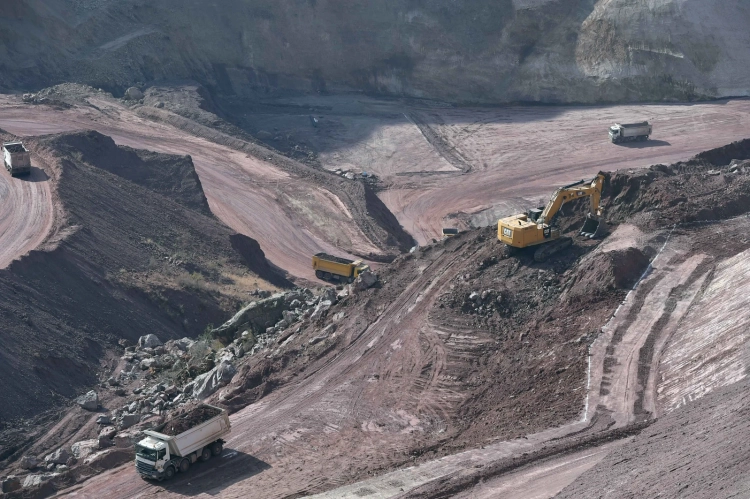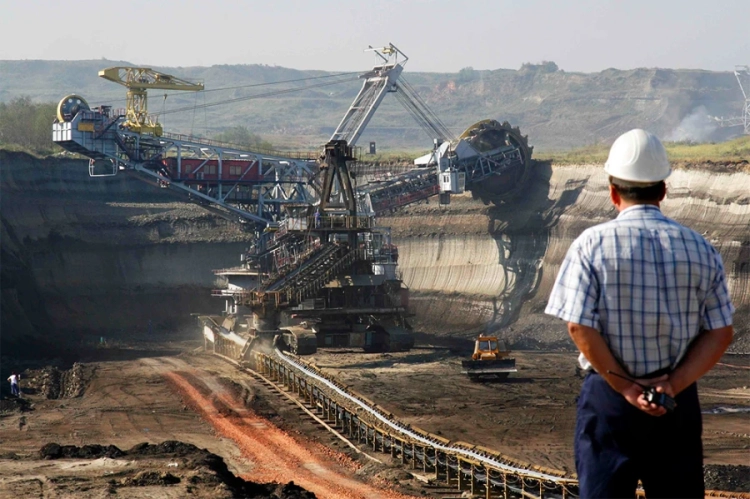People's Experience in Using Natural Resources.
The republic has reserves of fossil fuels, including coal, combustible shales, peat, gas, and oil. The large coal reserves have led to Kyrgyzstan being referred to as the "stoker" of Central Asia. Based on coal and oil deposits, worker settlements such as Kyzyl-Kiya, Suluktu, Kek-Jangak, Tash-Kemur, Kochkor-Ata, Min-Kush, Jergalan, and Kazhi-Sai emerged in the late 19th and early 20th centuries. There are huge reserves of lignite in Karakol, located in the current Naryn region.
There are dozens of iron ore deposits. Large reserves of this metal are concentrated in Zhetim-Tuu within the eponymous ridge. Rich mercury deposits are found in the south. The republic also has significant resources of precious metals. The largest gold deposit is Kumtor, located in the high mountainous area of Ak-Shiyrak (almost 4000 m above sea level). Significant silver reserves have been discovered in the Kumushtak deposit, located in the Talas region. There are also deposits of unique and rare earth elements, as well as non-ferrous metals.
Mineral non-metallic resources are important natural resources. Various rocks are widely used in construction and for decorative purposes: limestone, marble, granite, syenite, gypsum, cement raw materials, clay, and sand-gravel materials. There are also considerable reserves of various agro-ores, gemstones, and ornamental stones.
The country has numerous groundwater deposits, and freshwater bodies are of utmost importance. There are mineral waters of almost all known types, as well as deposits of therapeutic mud.
Many of these are used for balneological purposes (Kyrgyz SSR. 1982. P. 56, 57). During the Soviet era, Lake Issyk-Kul and its basin, with its recreational potential, were considered a health resort of union significance.
People's experience in using natural resources. Many scholars (Bartold, 1927. P. 23; Khudyakov, 1995) wrote about the Kyrgyz's skills in extracting and processing minerals since the early Middle Ages.
Regarding the 19th to early 20th centuries, there are numerous accounts of ore knowledge and mining among the Kyrgyz. For instance, N. A. Zeland wrote: "...in various places, stone salt, coal, lead, copper, and iron have been found.
Collector E. Maiyar, Central State Archive of Film, Phonodocumentation, and Photodocumentation of the Archive Agency under the Government of the Kyrgyz Republic
In the Issyk-Kul region, there is nitrate. The bottom of Issyk-Kul contains iron sand, from which the Kyrgyz make iron products. There are few limestone rocks; they are more commonly found along the Naryn" (Zelaid, 1885. P. 8). According to observations by Russian scholars and travelers, the Kyrgyz possessed the technology for extracting and smelting iron.
They also obtained and processed gold, lead, silver, coal, and other minerals. P. I. Shreider, who observed the work of blacksmiths in washing and smelting iron ore, described this process in detail: "The very bottom of the lake (Issyk-Kul. - A.Zh., T.E.) is sandy with significant percentages of magnetic iron ore, thrown up by the waves daily. From it, the Kyrgyz successfully produce various items: nails, horseshoes, knives, sickles, axes, and more" (Shreider, 1893. P. 173). An interesting observation is made by N. A. Severstov: "...at the mouth of Kyzyl Su, a fairly wide strip of black iron tailings was visible at the bottom of the water, which is mixed with sand throughout the river. The surf of the lake waves washes it, carrying the lighter sand further into the lake, leaving the tailings, constantly brought up by the fast river; this washed tailings are collected by the Kyrgyz, further washed on trays, and smelted in simple blacksmith forges, producing steel, from which they forge plows, aybalta, knives, sabers of quite good steel" (Severstov, 1873. P. 162).
Silver was widely used in decorating items of livestock equipment, clothing, and in the manufacture of jewelry. "Blacksmiths (temir usta) made horseshoes, knives, sickles, axes, plows, and the more skilled among them made weapons. Silver craftsmen (kumush usta, jeweler) made women's jewelry, decorations for men's belts, horse harnesses, etc., often distinguished by great artistic taste" (Peoples of Central Asia... 1963. P. 194, 195). As sources show, the Kyrgyz did not attach enough importance to copper. Probably, superstitious beliefs associated with unclean forces were a barrier to the use of this non-ferrous metal (Poyarkov, 1900. P. 34).
The inhabitants engaged in the extraction of rock salt. In Alai and Pamir, for example, salt was obtained from Ryankul, which, as V. I. Kushelevsky writes, represents a superficial and weak development of one layer of granular salt.
In the Tuz-Dara area, near Bolshoi Alai, nomads extract salt for their own needs, but it was of low quality there (Kushelevsky, 1890. P. 204, 205). N. S. Nazarov also writes about obtaining rock salt using small pickaxes (Nazarov, 1896-1897. P. 126, 127). In many places in Tien Shan and Pamir, salt was extracted not only for their internal needs but also for export (Aitmambetov, 1967. P. 208). The boiling of rock salt for subsequent sale led to the cutting down of shrubs and trees for firewood. L. Kostenko noted this, mentioning that in one place a spruce grove was almost destroyed (Kostenko, 1872. P. 396).
Since ancient times, there have been people in the community engaged in coal extraction. It was widely used by blacksmiths and jewelers. Using coal fire, they smelted lead from deposits, korghoshun, from which they made bullets. Hunters also engaged in this. With the help of folk ore experts, valuable coal and ore deposits such as Buurdinskoye, Kara-Monos, Haidarkan, Kadamzhai, Sumsar, and others were discovered (Baibosunov, 1980. P. 96).
Roots, stems, and bark of many plants were used to obtain dyes (from the root of rhubarb ышкын туп, lichen эцилчек, etc.) and household soap (from lamb's quarters ала бота, nettle чалкан). From the upper layer of oxidized rocks ачык таги, red clay жошо, mineral dyes were obtained for wooden parts of yurts and other household items (Antipina, 1962. P. 21, 22). Many plants were used as food additives and medicinal agents. From the second half of the 19th century, under the influence of migrants from Russia, fishing began to develop. For catching fish in Issyk-Kul, primitive spears (деге) were used, and dams were constructed on rivers (Peoples of Central Asia and Kazakhstan. 1963. P. 196).
The healing properties of mineral waters were utilized. The energy of flowing mountain rivers powered traditional water mills, суу тегирмен, which were widespread. According to data from 1879, there were 25 Kyrgyz water mills on the rivers flowing into Lake Issyk-Kul. Some also built juvaz - a device for squeezing oil from flax seeds, opium poppy, pumpkin, and nuts (Aitmambetov, 1967. P. 212).
Natural resources of Chui region















































